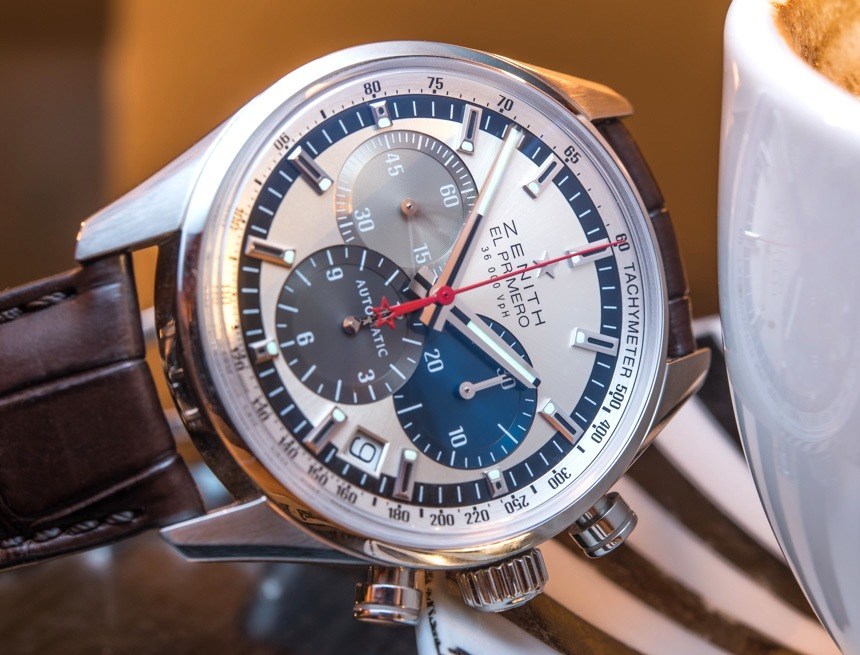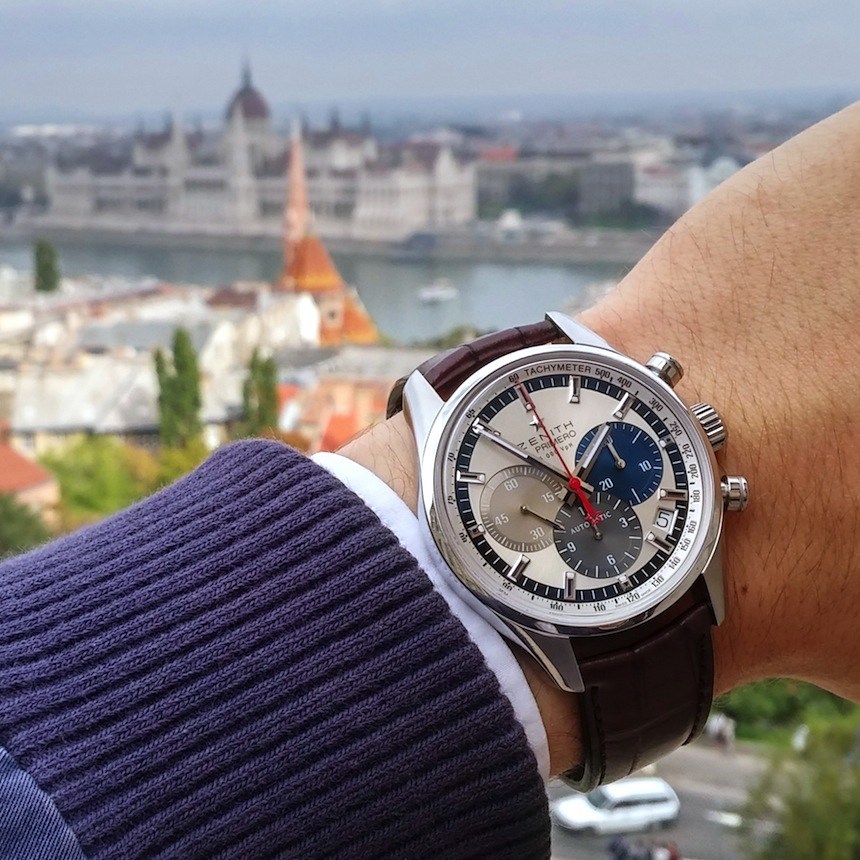
Not all chronographs are created equal – and if there ever was one to rightfully claim to be superior to at least most of the others, then that’s the El Primero caliber. The Zenith El Primero Original 1969 watch, contrary to its name, is a relatively new piece from Zenith, albeit one that promises to remain authentic to an original design with which Zenith debuted its remarkable chronograph movement family.
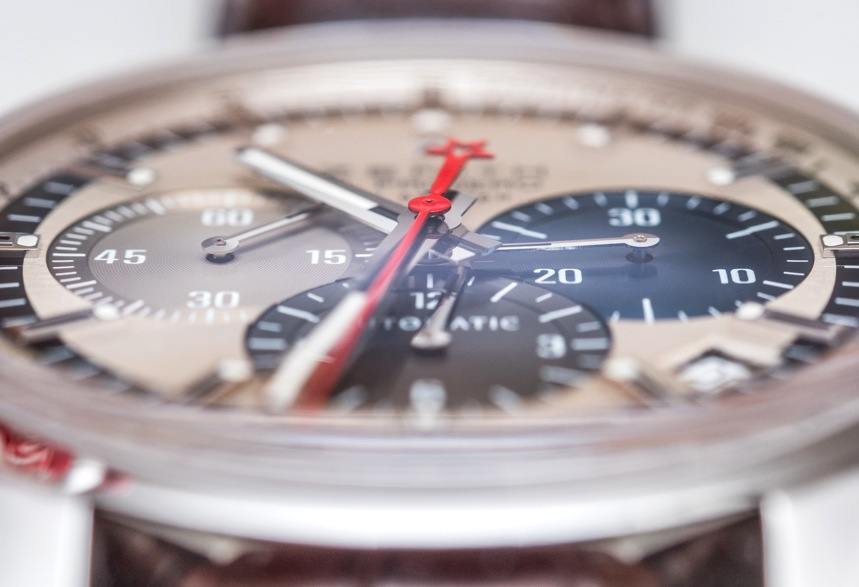
If you are the type of watch lover keen on owning a piece of haute horlogerie, but for whatever reason do not wish to, or simply cannot go for a minute repeater or a tourbillon, your best option is probably to just get a chronograph. For its sheer complexity, even to this day, the chronograph remains one of the most challenging-to-make complications – yes, even more complex than a perpetual calendar or a tourbillon, as echoed by numerous master watch makers I discussed this topic with. The history behind the Zenith El Primero further proves this point.
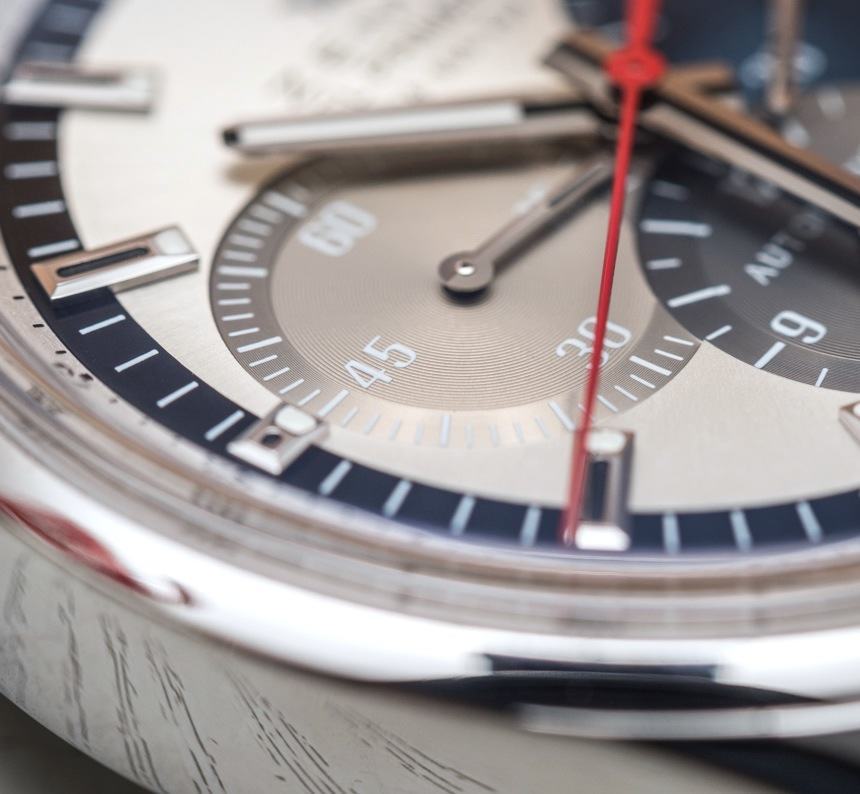
It was during the 1960s that four major brands (along with some others) got into cut-neck competition over creating the first automatic chronograph wristwatch. Heuer and Breitling collaborated (with the help of Hamilton, Buren, and Dubois-Depraz), while Seiko and Zenith were pretty much on their own. Who actually was first remains the topic of heated – and I’m sorry, but rather pointless – debate to this day. You get a different answer when you consider who was the first to debut the movement, the first to produce working prototypes, or the first to bring it to the market.
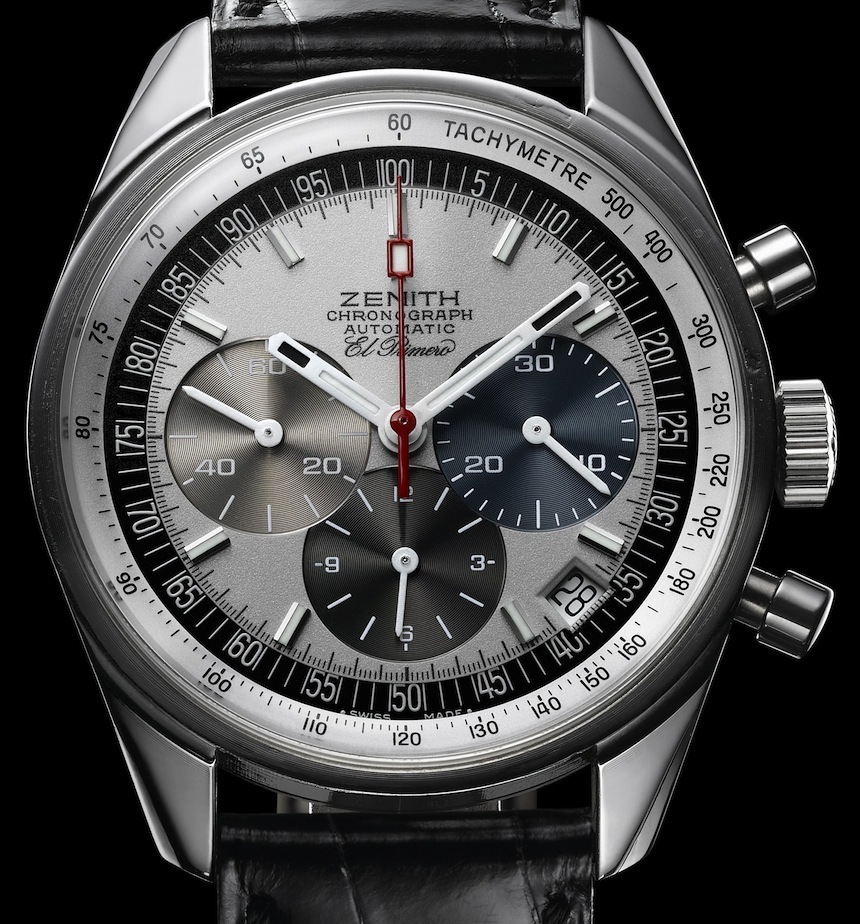
The “Original, Original” Zenith El Primero A386 from 1969.
The actual point is that all involved parties had to overcome tremendous challenges to create what they say was the first chronograph wristwatch that featured automatic winding… and all three succeeded, in one way or another, by early 1969. Some 46 years later, the question perhaps should be more about what this remarkable competition has given us today, rather than whose marketing department has the most to work with. In their own right, the Caliber 11 from Heuer, the 6139 from Seiko, and the El Primero by Zenith were, and are, awe-inspiring little machines.
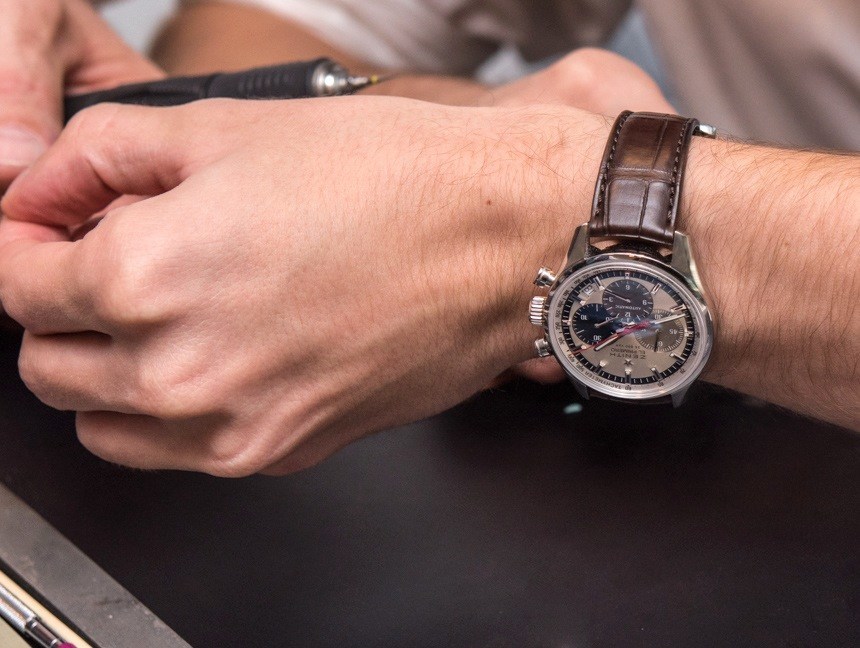
While all three calibers were unique in their own right, the El Primero offered something that even to this day sets it apart from the absolute majority of other movements (chronograph or otherwise): its 5 Hertz operating frequency.

Before we go into the numerous details of the Zenith El Primero Original 1969, let us bang on about the movement for just a bit longer. Called the El Primero 400, this particular version closely resembles the original one debuted in 1969. Composed of 278 components, this column-wheel chronograph offers the hours, minutes, and chronograph seconds through hands mounted in the center of the dial, running seconds at 9, 30-minute and 12-hour chronograph counters at 3 and 6 o’clock, respectively, and the date at 04:30 on the dial.
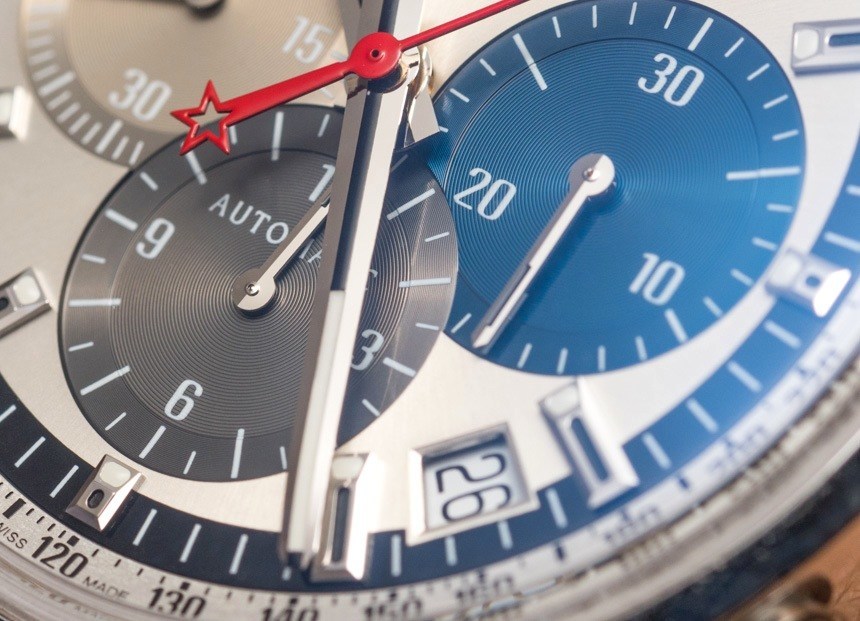
The El Primero 400 runs at 36,000 vibrations per hour (but of course!), and still offers a “minimum 50 hours” of power reserve. So what difference does this extra “speed” of 5 Hertz make? Technically, the higher the frequency, the better the chronometric performance over an extended period of time. A higher beat-rate, with the balance wheel making 10 semi-oscillations (5 left and 5 right turns) per second gives it greater stability and resistance against shocks, positional errors, and other factors that negatively affect the timekeeping performance.
Furthermore, because the balance wheel ticks 10 times – as opposed to the much more common 8, or sometimes only 6 or 5 times, encountered in most other watches – the seconds hands advance in a visually smoother way, with an almost perfectly fluid, sweeping motion. Incidentally, 5 Hertz may just be the perfect frequency, as the motion of the seconds hands is remarkably smooth – but not so much to imply an electrical movement underneath, as the small jumps are still visually present.
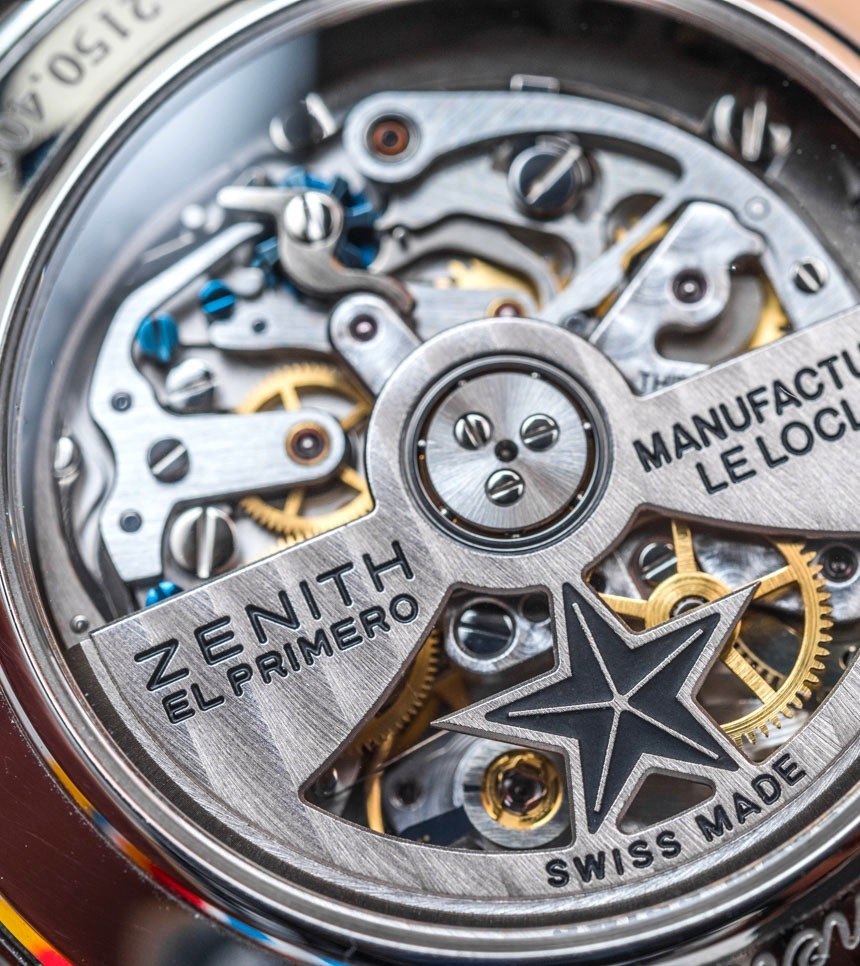
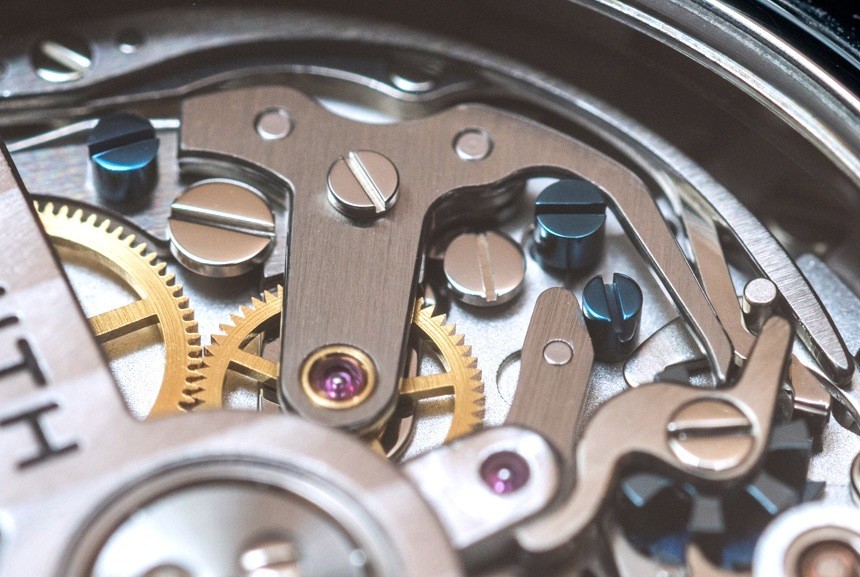
Over the years, Zenith has modified the El Primero in countless ways, adding complex calendars and even gimbal-suspended escapements (hands-on here) to it. And yet, as briefly discussed above, the complexity of this “base” movement is already truly remarkable. Luckily, the Zenith El Primero Original 1969 comes with a sapphire crystal case-back, exposing the strikingly beautiful and indeed very technical-looking movement inside. The large, skeletonized automatic rotor runs on seven ball bearings, and sports a skeletonized Zenith star logo in its center, along with wide Geneva striping and some bold “Zenith El Primero Manufacture Le Locle” scripts engraved.
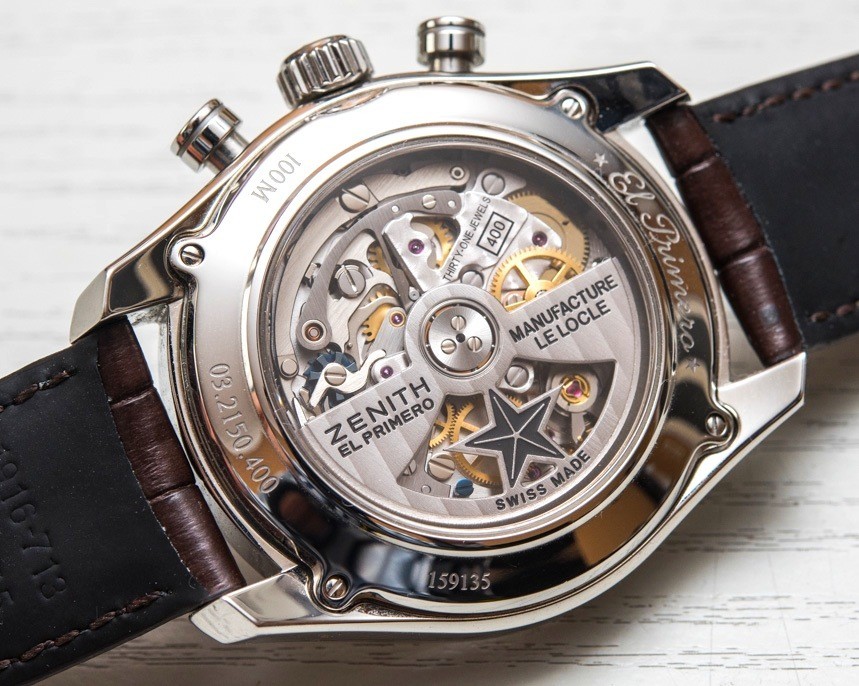
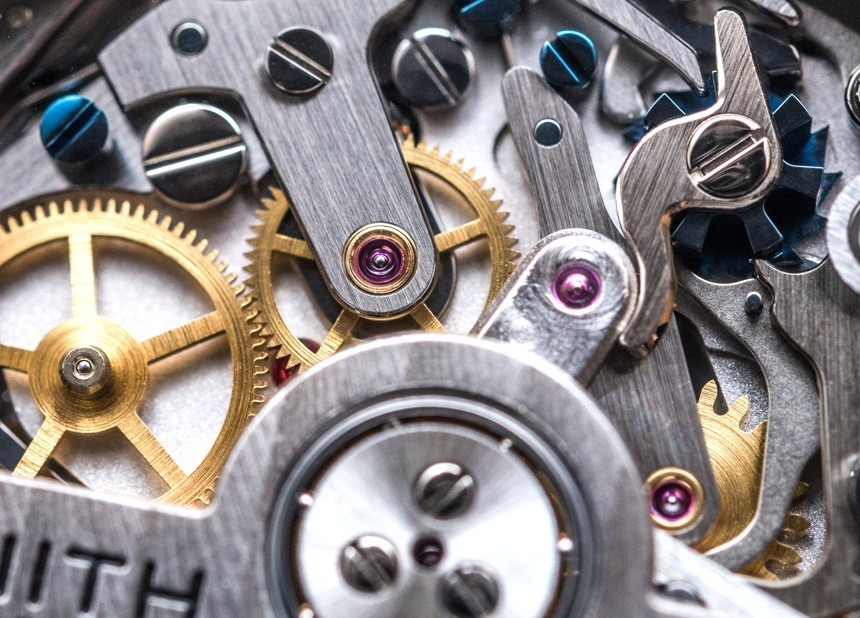
Once you look behind the rotor, machine-finished parts of very high quality are revealed. While the El Primero looks very impressive at first, one has to bear in mind that it was designed to be a tool, a device, a workhorse movement – and upon closer inspection, that shows. Comparing this Zenith El Primero to some other movements is like comparing a 4.0 liter flat six from a 911 to a roaring V12 from a Lamborghini: one was designed to work tirelessly, rain or shine, while the other is rather more delicate, finicky, and impresses in a more exotic way.
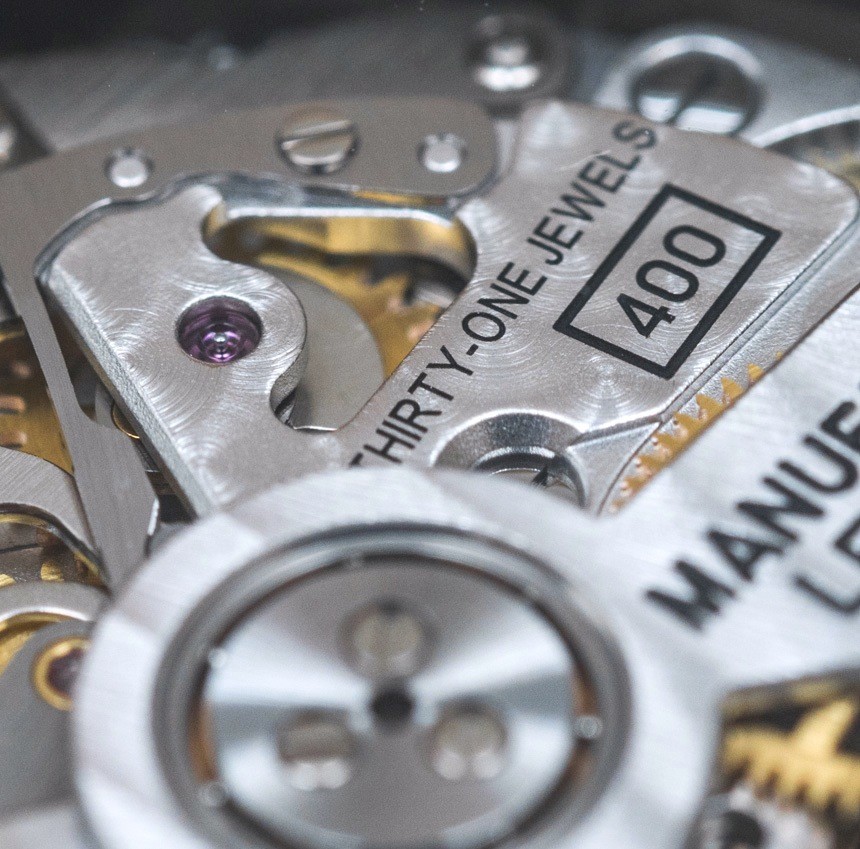
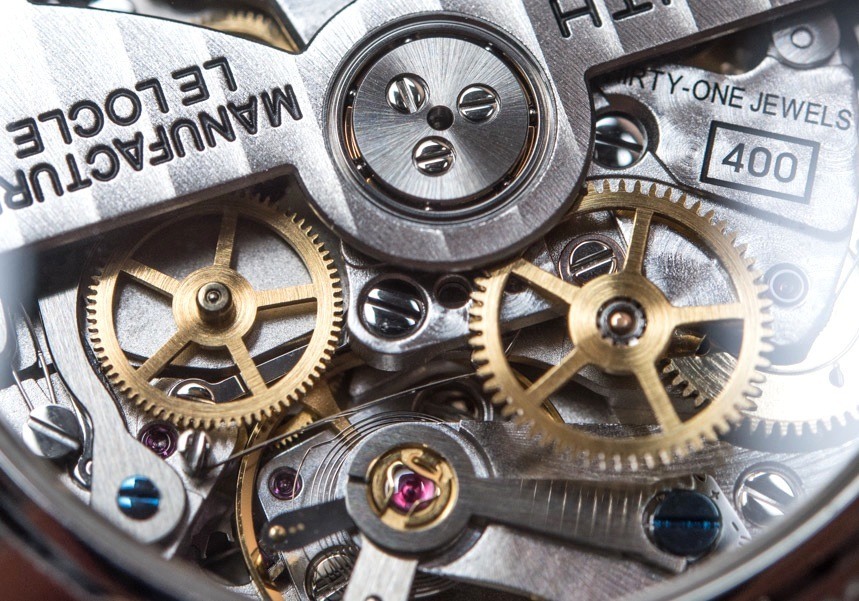
The El Primero 400 is not shy about displaying rather plain looking surfaces: the large and imminently visible area behind the two chronograph runner gears, as well as the surface behind and around the balance wheel both stayed plain, with rough edges also on show. Blued screws, brushed cams, and that massive rotor are at play to direct your sight away from the other areas – but the equation adds up more to the El Primero being true to itself than it grandstanding as an exercise in fine watchmaking.

